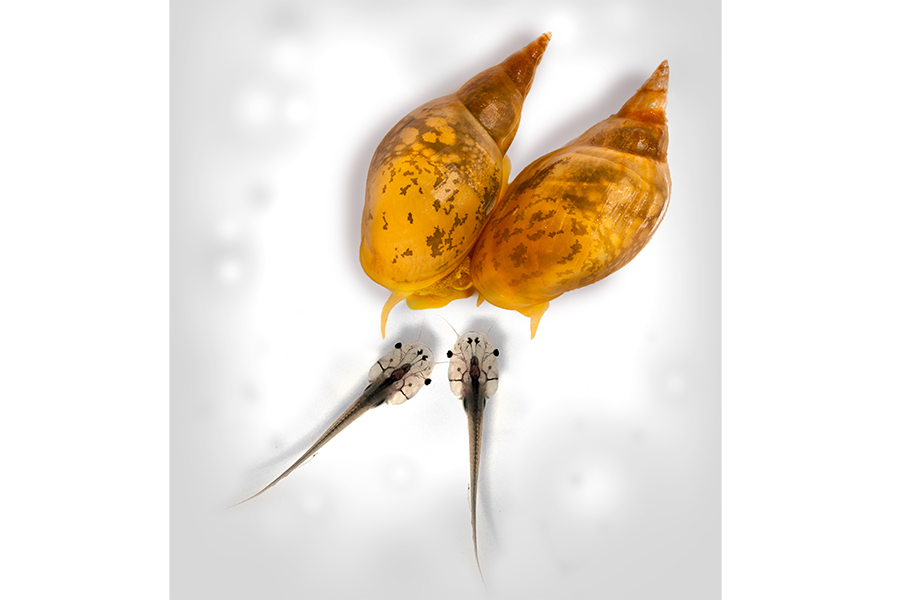How snail shells are unravelling the ancient secret of asymmetry
Loading...
For most animals, symmetry is only skin deep, and new research could help us understand why.
In a study published Thursday in Current Biology, scientists identified the gene responsible for asymmetrical development in frogs and pond snails. In doing so, they hope to further understand how – and why – asymmetry arose as a preferred body plan in the animal world.
Most animals appear bilaterally symmetrical. They have obvious left and right sides, and each side is an approximate mirror image of the other. But this symmetry is only skin deep. Internal organs are almost always arranged asymmetrically inside the body. With the exception of radially symmetrical organisms like jellyfish and sea anemones, this appears to be a general rule of animal biology.
“Outward symmetry is probably best for efficient movement,” lead author Angus Davison suggests, “whereas inward asymmetry is probably best because it is the most effective way to pack a series of sometimes asymmetric organs into a tight space.”
For most animals, the direction of asymmetry is invariable – except in extremely rare instances, the human heart is always on the left. But some species of pond snail, which sport their asymmetry in the form of coiled shells, flout that rule a bit.
Chirality, or an inherited variation in shell coiling and body asymmetry, occurs in up to 10 percent of all snail species. So while each species has a common coiling type – in most species, clockwise-coiling snails make up the majority – a small population of individuals have shells that twist in the opposite direction.
That doesn’t sound like a major change, but it can have serious biological implications.
“One of the oddities is that, because the snail bodies are mirror imaged, the rare coiling type will have difficulty trying to find a mate,” says Dr. Davison, who is an associate professor of evolutionary genetics at the University of Nottingham. “That means that the gene variant that determines the difference will tend to go extinct.”
In 2001, while living in Japan, Davison became fascinated with the rare coiling type and sought to identify the gene responsible for the mutation. With the help of high-end DNA sequencing techniques, Davison and colleagues mapped the pond snail genome. They determined that a tiny change – “one letter, or base, in the one billion that make up a snail’s genome,” Davison says – flipped the switch from clockwise to counter-clockwise.
The mutation occurred in a single gene called formin, which is active in the early embryos of pond snails. Researchers found that the same gene played a role in organizing the internal organs of developing frogs.
They also found that, by delivering an anti-formin drug treatment to developing snails, they could reverse the twisting direction of their shells, but at a cost: the treated snails did not survive.
“At the cellular level, the genes determining asymmetry are so important that any changes in them will tend to be lethal,” Davison says. “It is very difficult to change asymmetry without also changing other important functions.”
Davison and colleagues suspect that formin is one of the earliest “symmetry-breaking” genes in bilateral animals. This suggests that asymmetry is an ancient trait, derived from “a common asymmetry of the cell.” In order to further unravel the symmetry-breaking event, Davison and colleagues plan to dig deeper into pond genetics in future studies.






